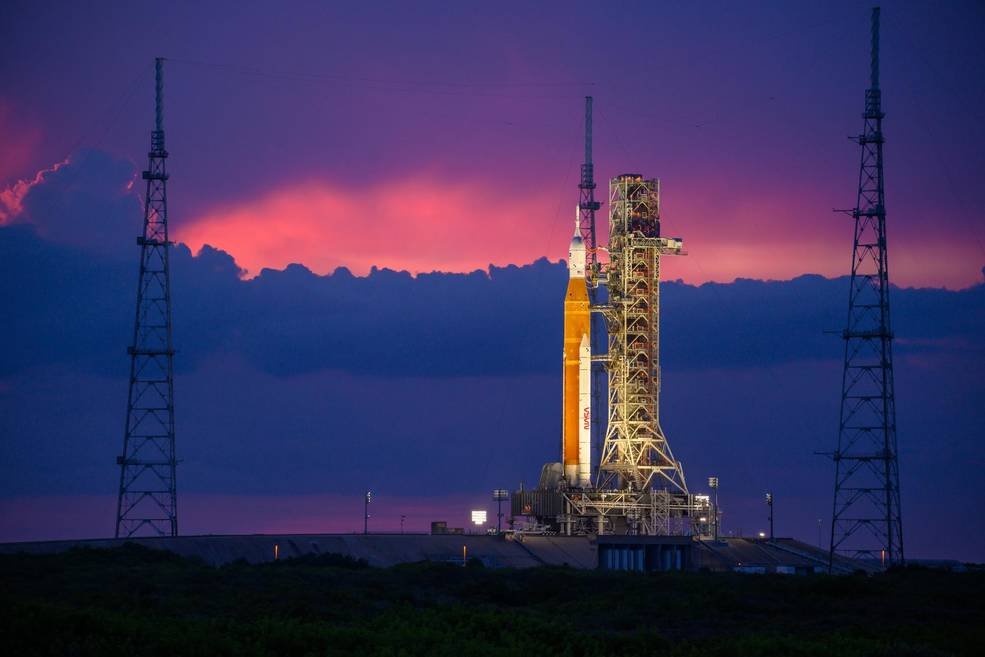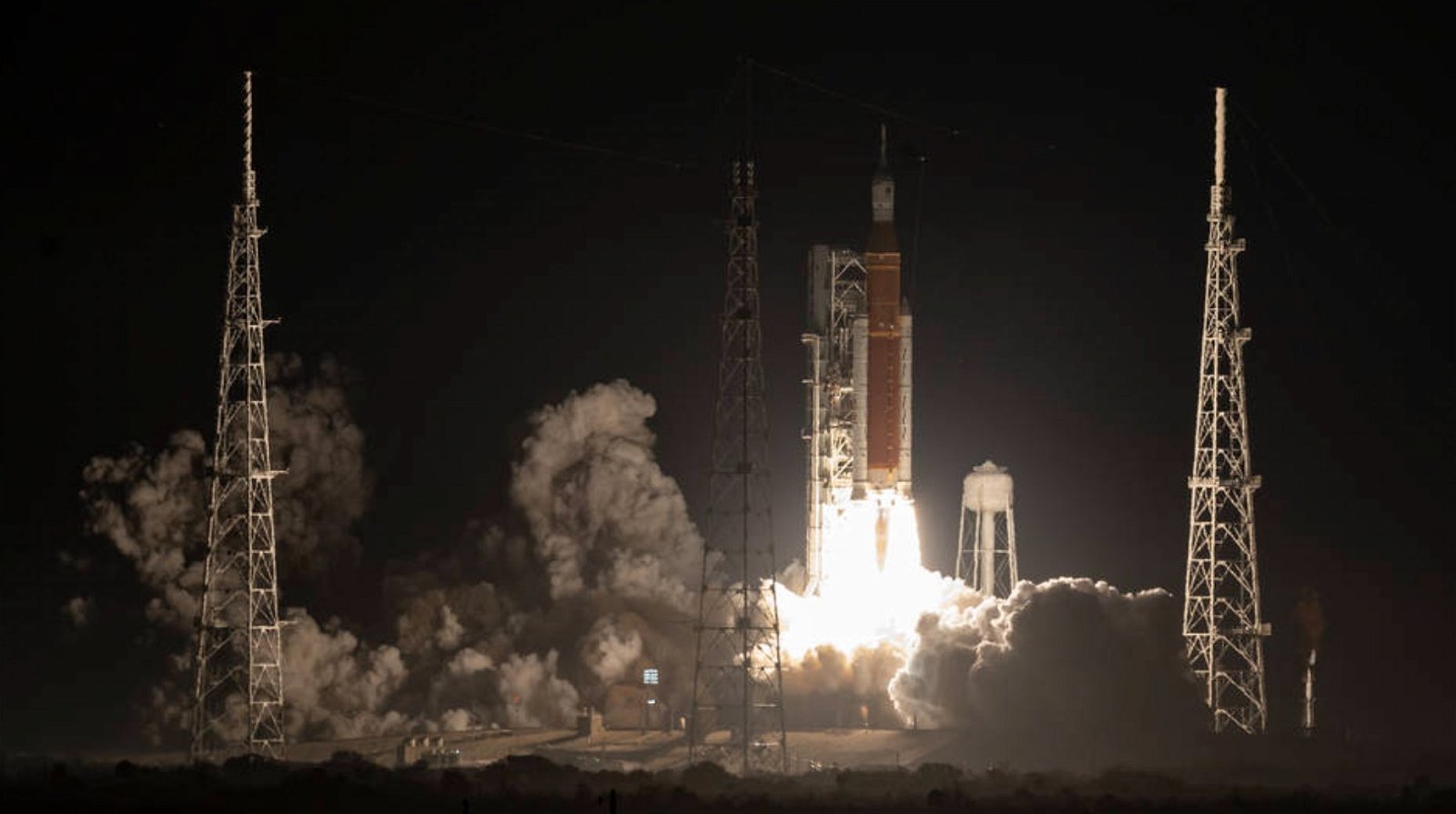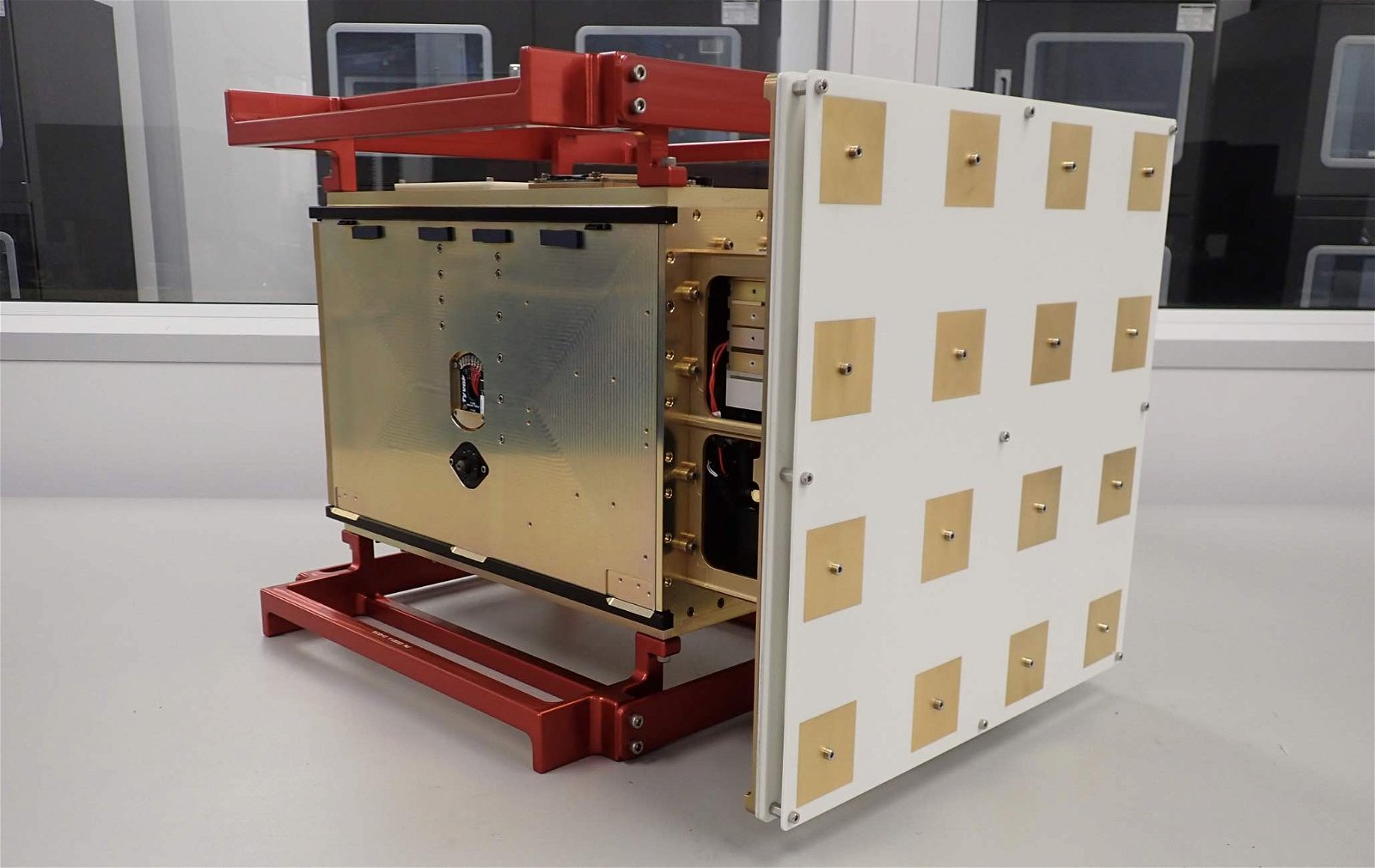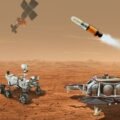

Welcome to this week’s installment of The Intelligence Brief… earlier this week, NASA made history with the highly anticipated launch of its Space Launch System rocket, part of the space agency’s Artemis program. Following news of the successful launch, we’ll be taking a look at 1) developments leading up to liftoff of the world’s most powerful rocket, 2) the great distance NASA’s Orion spacecraft will be going on this first leg of its journey, and 3) how the technologies demonstrated by the Artemis program will carry humans further from Earth than ever before in the decades ahead.
Quote of the Week
“There are no passengers on spaceship earth. We are all crew.”
– Marshall McLuhan
Before we get into the thick of things this week, a few stories we’ve been covering at The Debrief include how wormholes may have already been detected but could have been hiding in plain sight, according to a team of Bulgarian physicists. Elsewhere, research seems to show that a popular theory of consciousness centered on a region of the brain known as the claustrum is likely wrong. Also, a new DARPA program wants to remediate soil contaminated with explosives and aircraft fuel using bioengineered plants.
Meanwhile, in video news, be sure to check out our latest video short on how a group of Ukrainian aviation enthusiasts is using the remains of downed Russian aircraft to help raise money for Ukraine. Also, if you missed the most recent episode of Rebelliously Curious with Chrissy Newton, be sure to check out her recent interview with Faheem Hussain, Assistant Professor with the School for the Future of Innovation in Society, who discusses his research and interest regarding the “digital afterlife.” And as always, you can find links to all of our recent stories at the end of this week’s newsletter.
Now, it’s time that we turn our attention toward how things played out in Florida yesterday, as NASA made history with its launch of the world’s most powerful rocket, technology the likes of which will set the course for bringing humans to Mars.
We Have Liftoff
NASA landed another huge success this week as it launched the world’s most powerful rocket into space, which is now on its way toward the Moon.
The impressive launch of the American space agency’s Space Launch System (SLS) occurred at 1:47 a.m. EST on Wednesday from Launch Pad 39 B at the legendary Kennedy Space Center on Merritt Island, Florida, one of NASA’s ten field centers.


The SLS launch marks the first stage of its Artemis program, and carried aboard the powerful rocket is NASA’s Orion spacecraft on its initial uncrewed mission.
Expressing requisite enthusiasm, NASA Administrator Bill Nelson called the launch “an incredible sight,” praising the space agency’s efforts that took the SLS rocket and Orion into space together on their inaugural mission.
“This uncrewed flight test will push Orion to the limits in the rigors of deep space,” Nelson said in a statement, “helping us prepare for human exploration on the Moon and, ultimately, Mars.”
40,000 Miles Beyond the Moon
As Orion makes its way into history on its path toward the Moon, its current trajectory will carry it close to 40,000 miles beyond Earth’s natural satellite. The spacecraft will remain in space for a little more than 25 days.
Following its journey to Earth orbit, Orion successfully deployed its solar arrays as engineers back at ground control monitored the performance of its onboard systems. Orion then separated from the SLS rocket’s upper stage, which first provided an additional push prior to separation as its engine fired for 18 minutes to aid in carrying Orion onward toward its path around the Moon. From here, NASA’s spacecraft will be carried onward by its service module, provided by NASA’s partners with the European Space Agency (ESA). NASA’s other international partners include the Japan Aerospace Exploration Agency (JAXA) and the Canadian Space Agency (CSA).


In the years ahead, the Artemis program will take the first woman and first person of color to the lunar surface, reestablishing a human presence on the Moon for the first time since 1972’s Apollo 17 mission. However, NASA’s long-term plans are to put humans on Mars with the aid of such technologies in the decades ahead.
A Long Way to the Top for Artemis
NASA’s deputy associate administrator for the Exploration Systems Development Mission Directorate, Jim Free, said that although the space agency has seen several challenges leading up to Wednesday’s successful launch, the first leg of NASA’s Artemis Mission is already looking promising as the agency looks ahead toward carrying robotic and human missions to Mars.
On September 26, the SLS was moved back into the Vehicle Assembly Building as Hurricane Ian loomed nearby, the third setback following two earlier launch attempts on August 29 and September 4 where equipment problems grounded the rocket. After repairing a hydrogen leak and addressing a faulty temperature sensor, checkups were performed along with minor repairs to the rocket’s thermal protection system and other standard maintenance.
Mike Sarafin, Artemis I mission manager, called the accomplishment “the first major milestone of the mission,” adding that Orion “will now embark on the next phase to test its systems and prepare for future missions with astronauts.”
As Orion proceeds toward its journey around the Moon, several technology demonstrations will be performed involving CubeSats, each of which will perform its own unique mission after being deployed from the upper stage of the spacecraft.


On November 21, Orion will make its closest approach to the Moon on its way toward its furthest distance from Earth as it enters a retrograde orbit thousands of miles away before its return trip in early December.
Jim Free emphasized the significance of Wednesday’s successful Artemis launch, adding that the long-term benefits of the initial test phase of the Artemis program will lay the groundwork for space exploration that will one day take humans farther from Earth than any have ever gone.
“This successful launch means NASA and our partners are on a path to explore farther in space than ever before for the benefit of humanity,” Free said in a statement.
That wraps up this week’s installment of The Intelligence Brief. You can read past editions of The Intelligence Brief at our website, or if you found this installment online, don’t forget to subscribe and get future email editions from us here. Also, if you have a tip or other information you’d like to send along directly to me, you can email me at micah [@] thedebrief [dot] org, or Tweet at me @MicahHanks.


Here are the top stories we’re covering right now…
- Defying Current Theories, Researchers Say Something ‘Unexpected’ Has Been Observed During Fusion Experiments
New studies reveal unexpected behavior of ions in fusion reactions, which may offer clues in the effort to achieve sustained fusion ignition.
- Physicists Claim Wormholes May Have Been Detected, with Help from a New Theoretical Model
Wormholes may have already been detected, but have been hiding in plain sight, according to a team of Bulgarian physicists.
- DARPA Is Engineering Plants to Help Clean Soil Contaminated by Explosive Chemicals
A new DARPA program wants to remediate soil contaminated with explosives and aircraft fuel using bioengineered plants.
- Controversial Theory of Consciousness Challenged by New Study Involving Mysterious Brain Region
New research seems to show that a popular theory of consciousness centered on a region of the brain known as the claustrum is likely wrong.
- This Concerning Theory May Explain Why We Haven’t Found Evidence of Intelligent Alien Life
A team of researchers argues the “Great Filter” theory could offer a concerning explanation for why astronomers have yet to find evidence of intelligent alien life.
- Knowledge, Belief, and the Cosmos: The Proper Way of Swiping Left or Right
The suite of instruments assembled by the Galileo Project will seek the evidence needed to properly swipe the extraterrestrial interpretation of UAP to the left or to the right.
- Group Turning Downed Russian Aircraft Into Unique Collectibles To Help Raise Money For Ukraine
A group of Ukrainian aviation enthusiasts are raising funds for Ukraine’s defense by making collectable tags from downed Russian aircraft.
- Caught on Tape: A Sticky Study in Electricity Solves an 80-Year-Old Physics Mystery
New insights into the phenomenon of contact electricity have been revealed by a research team with the Ulsan National Institute of Science and Technology.
- “Vastly Underestimated” Ice Loss Presents a Grim Forecast for Future Sea Level Rise
This week, we analyze a recent international study pointing to a greater sea level rise in the years ahead than previous models expected.
- Inception: How Scientists Are Treating Reoccurring Nightmares by Injecting Sounds into Dreams
In a scene right out of the blockbuster movie Inception, Swiss researchers have discovered a method for treating people with reoccurring nightmares by injecting positively associated sounds into their dreams.
